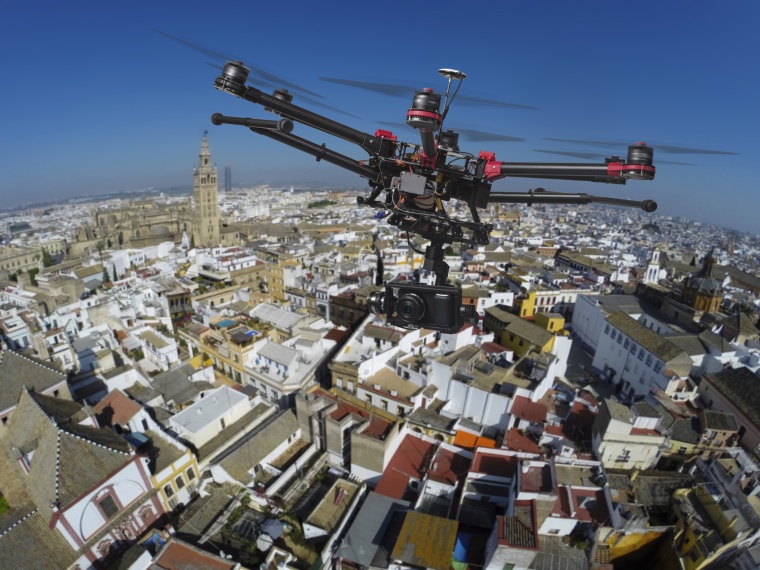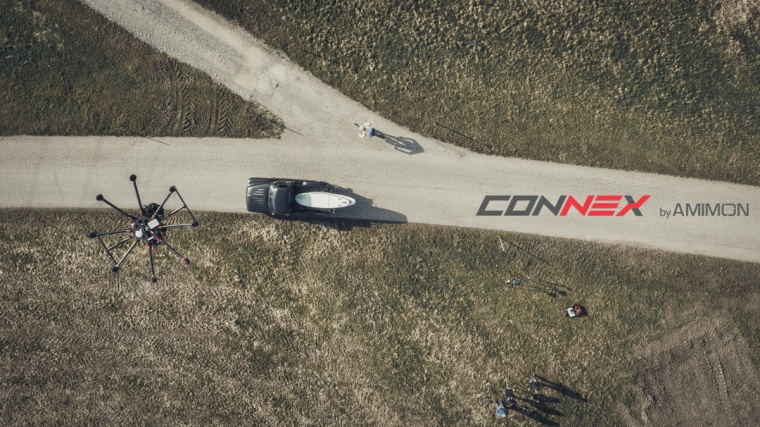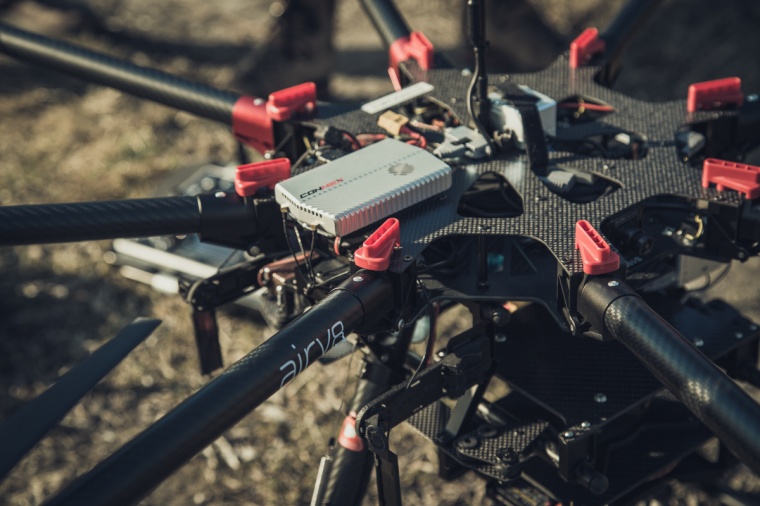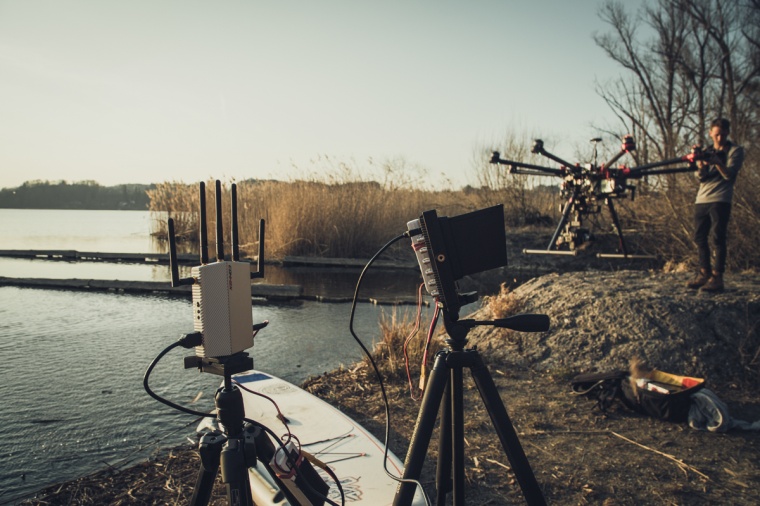Zero Latency for Real Time Security
Theres no doubt this years hottest new tech gear is the drone, or as the FAA prefers to call them, Unmanned Aerial Systems (UAS). And while commercial use of drones is still large...






There’s no doubt – this year’s hottest new tech gear is the drone, or as the FAA prefers to call them, Unmanned Aerial Systems (UAS). And while commercial use of drones is still largely prohibited, there is an application-development rush that will help accelerate the fast-growing use of drones by both hobbyists and professionals.
Thanks to advances in electronics, batteries and wireless technologies, drones are now capable of bringing new value and new options to many applications, from helping farmers locate their cows to improving broadcast coverage of outdoor sports. But no application has more potential to save lives than utilizing drone-mounted cameras to solve some of the vexing security challenges of our day.
Unlike use by hobbyists, professional security applications often require instantaneous capture and transmission of video streams beyond the technological capabilities of previous drone-based systems. This article will discuss security applications for drone-based video, including security inspections and search-and-rescue tasks, and note some of the key factors for successful implementation, including the rapidly-changing regulatory landscape.
Key Enabling Technologies
There are three technology improvement areas that are key enabling factors for security video use. The first of these is the capability of small drones to carry high-quality cameras. In this area, both sides of the equation are seeing improvements – drones are increasing their capacity with stronger, lighter batteries, motors, and airframes, and high-quality cameras have become smaller and lighter. Today, the largest of the small multi-rotor drones, with 8 rotors and designed for maximizing the payload, can easily carry high-resolution cameras with both visible and infra-red capabilities.
The second enabling technology area is the availability of light, capable camera gimbal mounts that provide vibration isolation and camera positioning and control. Today, many models are available to mount a wide range of cameras, including unobtrusive miniature models, DSLRs, and up to small cinema-quality cameras. Products range from inexpensive isolating mounts all the way to sensitive motorized mounts, from providers including DJI, Storm, Tarot, and others. These are a critical advancement, because otherwise the vibration of the drone rotors and environmental effects can negatively impact the video quality.
The third critical enabling technology is that of the wireless link to the camera. Wireless signals are used to control the drone itself, enabling a pilot to control the position of the drone and maneuver it as needed. For this use, any latency at all in the signal could cause problems; the camera operator must be able to see exactly what the camera sees in real time. New products like Amimon CONNEX now on the market transmit full HD video with zero latency. This level of visibility and control is needed so that the security operator can control the camera to capture the intended subject matter.
Security Applications and Benefits
By combining the capabilities of these enabling technologies, video-equipped drones can be tailored to meet the needs of specific security tasks, including infrastructure security inspections and search-and-rescue operations.
As an example, consider the case of a security threat on a railway bridge or other complex infrastructure installation. In the past, the only way to have a close look at the underside of a bridge was to either set up scaffolding or an equivalent support platform, or have one or more people climb the structure itself. Both of these approaches would allow for the inspection, but both also raise new security and safety concerns. It is even possible that such preparations could provide access to the structure for the very criminals we intended to impede.
With one or more suitably-equipped drones, this same bridge inspection can be conducted quickly, safely and without providing new opportunities for vandalism or worse. In this case, the drones would be outfitted with high-resolution cameras with either excellent low-light performance or an on-board light source. The size of the selected drones would be appropriate for movement in the spaces of the structure with suitable margin for error, and the real-time video link would be zero latency at full resolution to allow the operator to control the drone effectively and safely in the constricted space. Having this zero-latency link is critical for this operation, because any video latency while piloting a drone through narrow pathways increases the chances of damaging, destroying or losing the drone and the camera.
In another example, consider two recent cases; two escapees from a high-security prison in a wooded rural area, and the case of a single wanted sniper hiding in a similar terrain. In both those cases, hundreds of officers and volunteers were deployed to search the area where the fugitives were thought to be hiding – a painstaking and costly process. It is now thought that officers were close to these subjects at times without realizing it, and when they did realize it, did not have the capability to follow them when they fled.
For this application, one or more drones with thermal cameras could have been used to supplement the physical officers and help try to detect the presence and movement of fugitives. Because of the nature of the situation, the drones could have been used during the hours of darkness when the fugitives were likely to increase their movements, thinking they were better hidden. As in the case above, having a real-time zero-latency video link would be critical for this application because of the decreased ability of the operator to see the drone’s position and movement visually. Instead, the operator must depend on the transmitted video stream itself to maintain safe flying conditions, avoiding collisions with trees, overhead wires, and similar obstacles.
In each of these applications, the use of drones offers an additional benefit of speed and operational flexibility compared to the alternatives. Drones can be deployed in minutes – not hours or days – to quickly support operations in the critical early phases. This ability to get into action quickly translates into less operational disruption and cost in the case of infrastructure inspections, and into faster searches for escapees, helping constrain the size of the area to be searched.
Implementation Challenges
There have been great strides forward recently, both in raising the capabilities of small drones and in lowering their costs, but there are still significant barriers to their widespread use.
First and foremost, all airborne systems – including drones – are covered by FAA regulations. Before 2012, operators considered drones to be “model aircraft” and therefore not subject to the rigorous requirements of airframe worthiness testing and pilot certification that was required for other aircraft. In 2012, new Federal law clearly defined model aircraft to be aircraft, specifically adding them to the purview of the FAA, but allowing certain uses, including authorized government agencies and strictly hobby use. For the moment, all commercial uses are banned without specific permission from the FAA, but that situation will likely change shortly. The FAA has granted approximately 1,000 exemptions on a case-by-case basis, and proposed new rules that are being considered for implementation as soon as within the next few months.
If the proposed rules are implemented, many of the rules for commercial operations will be similar to the current hobby operational rules. For example, the drones must weigh less than 55 pounds, can only be operated during daylight hours, and must stay below 500 feet above ground level within eyesight of the operator. The biggest new requirement may be for the operators – the proposed rules would require operators to be at least 17 years of age, be vetted by the TSA, and be certified by the FAA by passing a recurring aeronautical knowledge test every 24 months. While this seems like a big step, it is still far less than the current requirement for any commercial operators to have a full pilot’s license.
There is also considerable anti-drone public sentiment and concerns about privacy matters, which are unlikely to disappear even when commercial drone operations become more common. Helping to address this, at least 13 states have already implemented new legislation concerning privacy rights and related matters not regulated by the FAA, which is primarily focused on safety. Some experts have also pointed out that trespassing and “peeping Tom” laws do prohibit some of the behaviors that people are concerned about, and will remain in effect.
Going Forward
We are still at a very early stage of understanding all the possibilities that drones offer to the security industry, but clearly they will become a valued tool. Let’s continue to work towards a safer and more secure world for all.
Business Partner
Amimon Inc.2025 Gateway Pl. Suite 450
CA 95110 San Jose
Germany
most read

When the Internet stumbles: Why DNS is important
When DNS fails, the internet stumbles-AWS outage proves resilience and redundancy are vital for digital trust

Is Your Venue Ready for Martyn’s Law?
Martyn’s Law demands stronger security by 2027. Is your venue prepared to protect and respond?

Assa Abloy's battery-powered Aperio KL100 secures lockers
Boost workplace security and operational flexibility by securing more than just doors.

Security management, building security & perimeter protection: the winners of category E at the GIT SECURITY AWARD 2026
GIT SECURITY AWARD 2026: Security management, building security & perimeter protection - an overview of the most innovative solutions

Machine & plant safety: The winners of category A at the GIT SECURITY AWARD 2026
GIT SECURITY AWARD 2026: Machine & plant safety - an overview of the most innovative solutions







